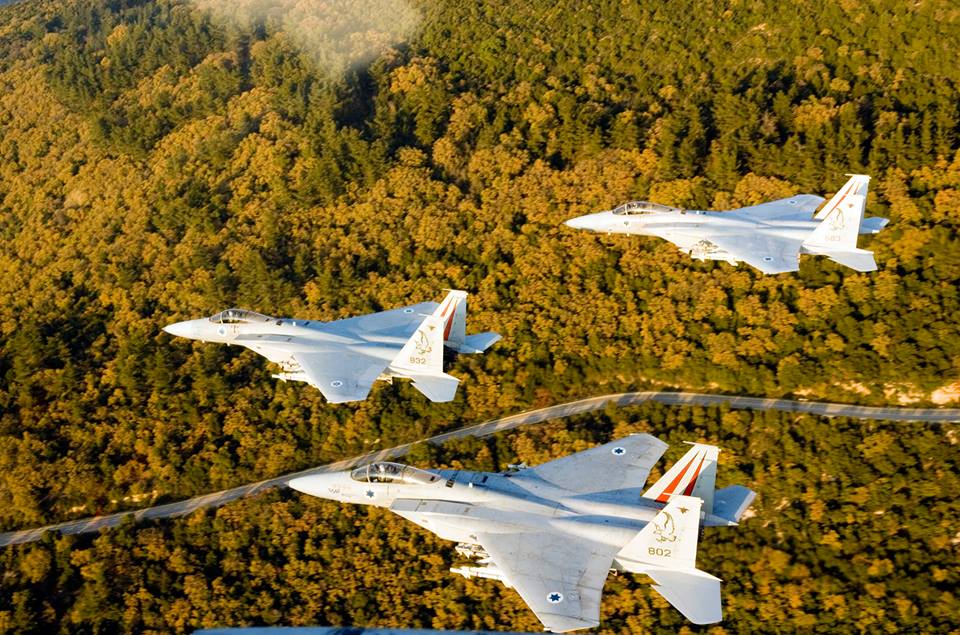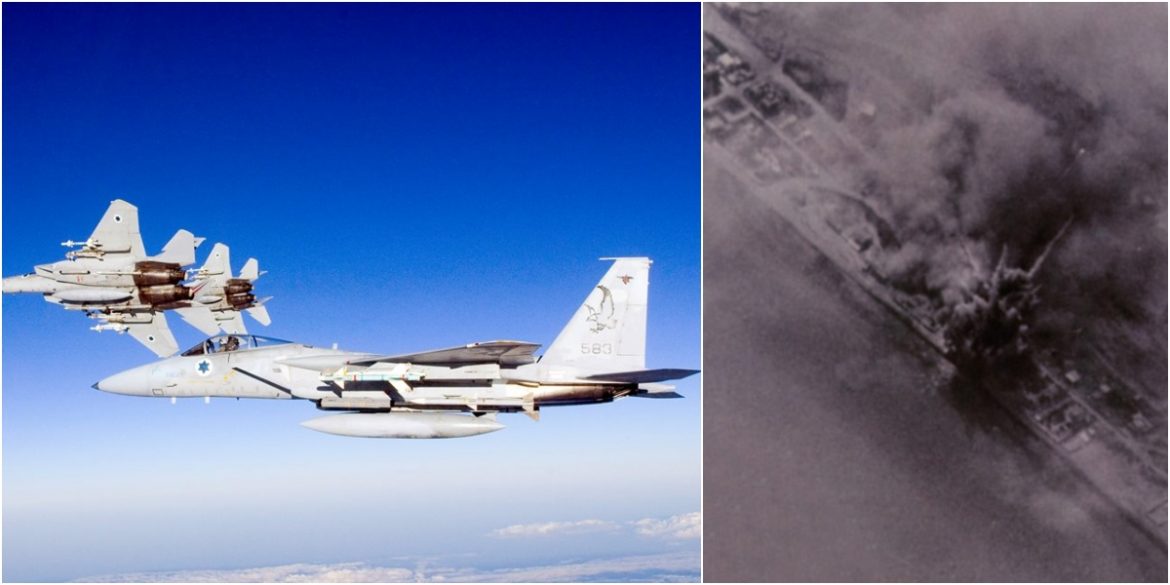The 1981 raid on Osirak was about half as long as Operation Wooden Leg
The F-15 Eagle, which was purchased in the middle of the 1970s to guarantee Israel’s air superiority in the Middle East for decades to come, has remained the undisputed king of the skies since its arrival in December 1976. The air superiority fighters were also given long-range precision bombing capabilities in the 1980s, and the incredible two-seat F-15I Raam’s introduction in 1998 substantially increased their mission capability.
IDF/AF foresight allowed the Baz (as the F-15A/B/C/D air superiority fighters were christened by the IAF) to evolve into a long-range strike aircraft, as recounted by Shlomo Aloni in his book Israeli F-15 Eagle Units in Combat. In October 1985, after a terror assault against Israeli civilians distant from home, the Israeli government was able to sanction a strike on the PLO headquarters in Tunis. This was after the Lebanon War. On September 25 of the previous month, Force 17 of the PLO assaulted an Israeli yacht off the coast of Larnaca, Cyprus, murdering the three members of the crew. The IDF/AF would then launch its longest bombing mission in history as a result of this move.
In 1985, Israel was a country in trouble, with a raging inflation that had put its economy in danger of collapsing. The Israeli government decided to leave Lebanon on January 14, 1985, since the conflict in June 1982 had not resulted in a breakthrough in relations with Israel’s neighbors or stopped the threat posed by the PLO. Although a small IDF force remained to help the Christian militia in the buffer zone in southern Lebanon until May 2000, the pullout was completed by June of that year.
Between 1982 and 1985, hundreds of Israeli soldiers died in Lebanon, although this campaign resulted in no diplomatic agreements with the surrounding Arab countries. Even the PL0’s expulsion from Lebanon turned out to be a hollow success because Shiite Muslim militias like Hezbollah and the Amal Movement, which were formed after the war to fill the political void left in the south of the nation, continued the PL0’s guerilla fight against Israel.
The following analogy was used by a noted Israeli defense analyst to describe the predicament the IDF was in after 1982 at a counter-terror operations conference in 2005:
‘A military force can defeat terror on the tennis court, only to find out that the terrorists have already started playing basketball — an entirely new game on a new court.’
And this was the circumstance Israel found itself in 1985 after the Palestinian strike off the coast of Cyprus. The PLO’s infrastructure in Lebanon had been destroyed by the IDF, but the Palestinians had decided to launch a new front far from Israeli territory. The PLO’s new headquarters facility in Tunis, which is 1280 miles away from Israel, was chosen as the target of a large retaliatory air strike because the Israeli government believed that this was the only option to stop the PLO from taking this course of action.
The mission’s planning and execution were given to the Spearhead Squadron under the codename “Operation Wooden Leg.” Six of the unit’s seven F-15B/Ds, piloted by the squadron’s six GBU-15-qualified aircrews, would be at the center of the assault. Four single-seat jets from the Double Tail Squadron would be one of the IDF/AF assets used to support these aircraft and troops. To Tunis, where they would drop GP bombs without guidance, two single-seat Bazs would follow the two-seaters designated Nos. 7 and 8. The mission required two more Double Tail Squadron planes, and they would accompany the primary strike aircraft until the crucial in-flight refueling point.

The eight F-15s would then continue with the mission after topping off their fuel tanks, while the two backup jets would return to base. However, if one or more of the planes were unable to take on enough fuel for the remainder of the operation or experienced a technical issue while on the tanker, the spare jet or jets would take its position right away, leaving the malfunctioning jet to return to Israel.
The Wooden Leg aircrew was the best at employing PGMs, as it had been in past IDF/AF special operations. As had been the situation in 1981 when fellow Mirage IIIC ace Yiftach Spector led the Osirak raid in a brief leave from his work as CO of Ramat David air base, the formation’s still unofficially undisclosed senior officer flew in the liar that filled the No. 4 position. Seven of the participating aircrew were already certified MiG killers, and the eighth would be inducted the following month.
The strike was authorized by the Israeli government on September 26, 1985, and the aircrew engaged flew a challenging training mission the next day to practice the operation’s PGM delivery and in-flight refueling drill. Following the completion of preparations, the Baz crews departed for their aircraft on October 1st to begin the IDF/AF’s longest-ever bombing mission.
At 8:00 a.m. local time, the 10 F-15 strike aircraft took off, with the No. 5 jet pressing into the tanker despite one of its two multi-function displays malfunctioning. The Bazs met up with two Boeing 707 tankers an hour into the journey, and the in-flight refueling component of the mission was successfully completed. The F-15s continued toward Tunis with each aircraft carrying 13.5 tons of fuel as the two air spares flew back home.
The formation divided into two flights of four in the trail with a four-minute separation after receiving one last INS update. A few minutes later, the No. 3 plane experienced another technical issue when the bomb delivery system went offline as the crews were giving the PGMs a final check time. There was no backup to bomb No 3’s target since each Baz had its own aim position inside the PLO HQ compound. The crews debated target reallocation swiftly, but it was decided to leave things as they were since each crew was well-versed in its own target.
Clouds and smoke significantly hampered the navigator’s ability to direct the GBU-15, which required a clear line of sight between the target and the data link equipment carried in the retreating aircraft to be effective. For the PGM, the maximum drop height and distance were 40,000 feet and 24 miles, respectively. The navigator continued to direct the PGM to its aim point as the pilot left the area as the bomb descended toward the target using a television camera image that was relayed from the bomb to the Baz via a data link pod. The guiding instructions from Baz’s navigator to the bomb were the “downlink,” while this image served as the system’s “uplink.”
Baz crews were surprised to see a lot of clouds in the sky close to the target region as the bombers started to fly toward the Tunisian shore. They were relieved to observe that the target region was cloud-free when they drew closer to Tunis, indicating that the PGM attack could proceed after all.
Three direct strikes were seen after a 90-second pause after the first three Baz bombers detonated their explosives once they were within range. Now that the second wave was ready to strike, Nos. 5 and 6 dropped their PGMs. The bomb dropped by No. 6 missed the target, while only the weapon unleashed by the first jet made a direct hit.
The mission leader used up his GBU-15 and joined up with the last two F-15s (which were not equipped with PGMs) on their bombing run so that his navigator could take pictures of the smoking remains of the PLO HQ complex. No. 8 located his target and dropped the six 500-lb Mk 82 bombs mounted on the vertical ejector rack beneath the jet. The No. 7 jet’s pilot was unable to visually identify his aim point above the target because of the dense smoke, so he and the formation leader circled Tuinis once more before making a successful bombing run from a different angle.
Israel declared the operation to have been a total success right away. Up to 75 people—60 of them were PLO members, some of whom were purportedly from Force 17—had been killed or injured, and the PLO headquarters complex was in ruins.
The F-15 crews proceeded east, leaving a shell-shocked Tunis in their behind. Each aircraft was still carrying 10 tons of fuel. They met up with a command and control Boeing 707 that had also been involved in the mission, making their flight back to Tel Nof that much simpler. At 1400 local time, the F-15s safely returned to base while the latter fighter served as a mother ship, bringing the six-hour mission to a close. The Osirak attack in 1981 lasted a little under half as long as this mission.

Israeli F-15 Eagle Units in Combat is published by Osprey Publishing and is available to order here.
Photo by Israeli Air Force Facebook Page

